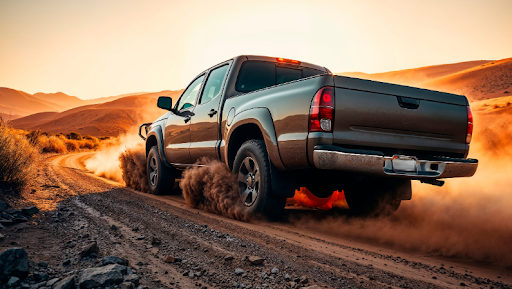
Domestic auto makers will need new products and new thinking to keep afloat.
The waters of Canada’s Petitcodiac river usually flow serenely into the Bay of Fundy, following a predictable course to the sea. Except, when tidal pressure from the Bay swamps and pushes the river water back to higher ground. This reversal of a traditional pattern is a fascinating and somewhat disconcerting sight.
Equally fascinating, and disconcerting, considering the job-drains and trade-dollars involved, is the U.S. passenger-car market.
The once serene flow of Detroit-badged car brands and models has been swamped by a tide of imported cars and parts for transplant assembly, brought to our shores through our open ports. The force of these passenger-car tides, detailed on this page, are evident. Detroit brands, in 2003, fielded 45 car models and the non-Detroiters 95. The results were reasonably predictable. Outgunned by a twoto- one product-offering margin, Detroit was outsold, 4,213,000 to 3,402,600.
Regardless, the Detroit iron has managed to maintain 44.7 percent of the passenger-car sales from only 32.1 percent of the product count, certainly not a sterling performance, but hardly the “abandonment” of the car market decried by some automotive soothsayers.
Of the Detroit contingent, General Motors, even with the thinning of Oldsmobile and the elimination of two sporty lines, offered 25 models and sold far more cars than Ford, Toyota or Honda, the numbers two through four on the volume listing. Oddly, General Motors has come full circle in the media concept of correctness for automotive marketing. Early on, Detroit was castigated for having too many models. Volkswagen, with their Beetle, was the media star. Next came the limited models and no-option packages of the Japanese to stir the writer’s emotions.
Currently, the ever-expanding model and equipment offerings of the many aggressive Asians and Europeans receive media accolades, and GM, either by plan or sloth-like corporate inertia, fits the current mode. Look at the numbers, General Motors and Toyota lead in both model count and sales. Ford was, in 2003, working through a post-Nasser new-product drought but carried a slim second spot on the car-volume list and had the highest per-model sales at 93,913. Departing the lower-midsize Contour/Mystique segment and weaning their small-sporty’s down to Mustang through the elimination of Cougar and ZX2 has cost Ford volume, but probably staved off model-line operating losses. There are always questions — push for cost-covering volume or cut the costs?
The Chrysler side of DCX, sans Plymouth, has been called a truck company and did, in 2003, experience a low ratio of sales to offerings and therefore low sales per model. Honda, often chided for being late to the truck market while concentrating on cars, is second to Ford in model-utilization at 82,010 sales per model, but was edged by Toyota’s volume. Nissan, pushing back into the market, passed Chrysler on both model-utilization and volume while the “other” Japanese were selling a mix of generally lowerpriced, lower-volume cars, some reasonably strong, some with problems. Meanwhile, the Koreans are pushing their standard low-price, long-warranty, more-models agenda uphill in both offerings and volume.
Could/should Detroit have done more to slow the tidal wave? Definitely yes. Are they the dismal no-brain car-marketing failure pictured by some? Definitely not. Can Detroit regain one half the car market? Not unless existing models are improved and updated on a timely basis by each of the Detroiters and additional models are added by Ford and Chrysler. Niche vehicles are fine, but highervolume core models are needed from which to profitably spawn the niches. The outlook for Detroit’s cars? Slow the decline for a year or two, stabilize for a year or two, claw back later. Detroit is moving away from its “good enough” product mentality and is developing an urge to be really good. There is an understanding that marketing is an essential tool, but product is the essential tool. The boat has been swamped and has taken on water, but as the mental pumps are now running, the boat is not sinking.









More Stories
RAM Trucks in Toronto: Why CarHub North York Chrysler Delivers the Best Experience
Buying Car Insurance in Toronto? Don’t Make These Rookie Mistakes
Extend Your Range, Maximize Your Storage with FRDM’s 45 Gallon Combo